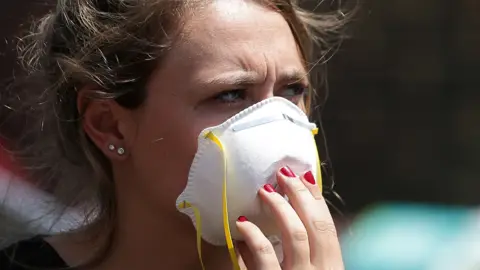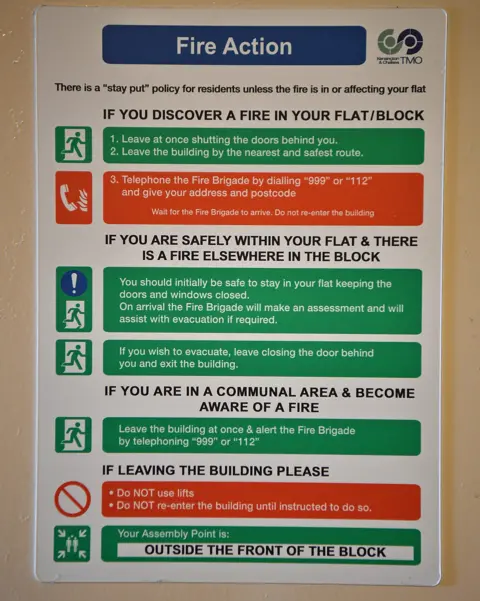London fire: Why are people told to 'stay put'?
 Getty Images
Getty ImagesAfter the horrendous fire that swept Grenfell Tower in west London, it has emerged that notices in the block instructed people to "stay put". Why is that advice given?
Fire action notices in the tower advised that unless the fire was in or affecting their flat, they should remain in their homes.
Guidance issued to tenants in a newsletter said: "Our longstanding 'stay put policy' stays in force unless you are told otherwise. This means that (unless there is a fire in your flat or in the hallway outside your flat) you should stay inside your flat."
This is fairly standard advice for people living in purpose-built blocks of flats.
 Getty Images
Getty ImagesIn their general advice, the London Fire Brigade says if a fire breaks out in a block of flats, people living in the block - whose flats are not affected by the smoke or fire - are "usually safer" staying in their homes.
Elfyn Edwards, a fire safety expert and former firefighter, says the stay put policy is designed to stop residents in flats unaffected by fire from unnecessarily evacuating the building and blocking the stairways.
The key factor is how a fire spreads. The principles of fire safety in the UK are based on a fire being able to be contained. Usually the way tower blocks are designed means a fire breaking out in one flat should not spread throughout the rest of a building.
Each flat is designed to be separate and able to contain a fire.
But, Mr Edwards said, the Grenfell Tower blaze - because of the speed at which the fire had engulfed the block - was unprecedented.
Geoff Wilkinson, a fire and building inspector, told the BBC that one of his "major concerns" would be that smoke seems to have spread into escape routes. He also said the system of fire alarms in tower blocks was not exactly as might be assumed.
"The way these buildings work isn't for everyone to escape. With a single staircase, the intention is that the fire is contained within the individual apartment.
"So you don't have to have everyone escaping all at one point. What will happen is the fire service will arrive, they'll take command of it, and they will make a decision as to which floors should evacuate."
Fire safety expert Graham Fieldhouse said a "stay put policy" did not mean residents must remain in all situations.
"There are questions about the stay put policy and people's understanding of the policy," he said.
"If you're affected by fire or smoke, get out."
As an example, guidance issued by Harlow council, in Essex, says: "If you are in doubt - get out."
 PA
PAThe Local Government Association, which represents councils, reiterates that message in its 2012 guidance, which says a stay put policy does not imply those who wish to leave a building should be prevented from doing so if they feel "threatened".
One resident of Grenfell Tower, Michael Paramasivan, said that he had been told in the case of fire he must stay in his flat - advice he ignored.
"If we had stayed in that flat, we would have perished," he said.
This is not the first time the advice to stay put has been called into question.
In 2009, six people died after a fire broke out in Lakanal House, a tower block in Camberwell, south-east London.
But, in a report following the 2009 tragedy, the chief fire and rescue adviser, Sir Ken Knight, said the spread of that fire had been unusual.
He said a full understanding of how it had spread was needed to make sure the "stay put" principle was still sound.
Along with many others, that question may now be asked again.
